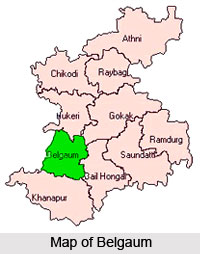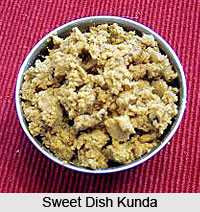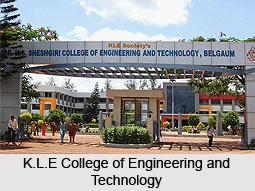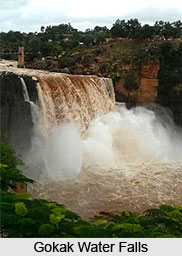 Belgaum, earlier known as "Venugrama or the "Bamboo Village" is one of the
oldest, prominent and well cultured historical places located high in the Western Ghats. Belgaum has a rich cultural heritage that has much to be discovered. The place has a glorious past.
Belgaum, earlier known as "Venugrama or the "Bamboo Village" is one of the
oldest, prominent and well cultured historical places located high in the Western Ghats. Belgaum has a rich cultural heritage that has much to be discovered. The place has a glorious past.
Belgaum is renowned for its sweet dish Kunda. It is prepared from milk and is available in sweet marts across the city. Belgaum is also known for other sweet dishes such Balushais .
Geography of Belgaum
Belgaum is located on the northwestern border of Karnataka, within striking distance from Goa and Mumbai. Panaji. Belgaum is located at 15.87° N 74.5° E and has an average elevation of 751 metres. It is one of the oldest towns in the state. The river that flows through this district is river Markandeya. There are about 1278 villages in the district with an area of 13,415 km. Belgaum is situated near the foothills of the Sahyadri mountain range at an altitude of about 779m, 100km from the Arabian Sea. Belgaum is a city that is gifted with a plesant climate throughout the year. The annual average rainfall is 50".
History of Belgaum
Belgaum was built in the 12th century AD by the rulers od Ratta dynasty. Belgaum served the capital of that dynasty between 1210 and 1250, before the Rattas were defeated by the Yadava Dynasty of Devagiri. In 1300 the Khiljis of Delhi invaded the region and ruined the indigenous powers of the region. In 1336, Vijayanagara Empire established power here. After a century the town became a bustling trading hub for diamonds and wood, owing to its favourable geographic location in the kingdom. In 1474, the Bahmani Sultanate captured the fort of Belgaum. In 1518, Bahamani sultanate split into five small states, and Belgaum became part of the Adilshahi sultanate of Bijapur.
In 1686, Aurangzeb, the Mughal Emperor overthrew the Bijapur sultanate, and Belgaum passed nominally to the Mughals. In 1707, after the death of Aurangazeb the Mughal empire declined and the Maratha confideracy took control of the area.
In 1776, the country was overrun by Hyder Ali of Mysore but was retaken by the Peshwa with British assistance. In 1818, British Raj deposed the last Peshwa and annexed his kingdom, which included Belgaum.
 Belgaum participated actively in the Freedom Movement with whole country. One of the prominent ladies of the time Rani Channamma of Kittur along with Sangolli Rayanna and Babasaheb was first to start this movement. On December 1924, Belgaum was chosen as the venue of the 39th session of Indian National Congress under the President ship of Mahatma Gandhiji. The city was a military installation for the British Raj as a result of its nearness to Goa which was then a Portuguese territory. After the British left, the Indian Government continued to have Armed forces installations in Belgaum. In 1961, Government of India under the Prime Ministership of Nehru used forces from Belgaum to end Portuguese rule of Goa.
Belgaum participated actively in the Freedom Movement with whole country. One of the prominent ladies of the time Rani Channamma of Kittur along with Sangolli Rayanna and Babasaheb was first to start this movement. On December 1924, Belgaum was chosen as the venue of the 39th session of Indian National Congress under the President ship of Mahatma Gandhiji. The city was a military installation for the British Raj as a result of its nearness to Goa which was then a Portuguese territory. After the British left, the Indian Government continued to have Armed forces installations in Belgaum. In 1961, Government of India under the Prime Ministership of Nehru used forces from Belgaum to end Portuguese rule of Goa.
In 1947, when India became independent, Belgaum became part of Bombay State. In 1956, Belgaum District was transferred to Mysore State.
The District Headquarters, Belgaum is a picture of contrasts. On one side is the old town area where the cotton and silk weavers still create magic with their fingers. And on the other side the modern, bustling, tree-lined Cantonment built by the British.
Demography of Belgaum
As per 2001 census, Belgaum had a population of 399,600. Males constitute 51% of the population and females 49%. Belgaum has an average literacy rate of 78% of which 54% of the males and 46% of females are literate.
Culture of Belgaum
Belgaum witnesses a rich cultural diversity dueto its nearness toMaharashtra and Goa. The customs and traditions of Belgaum have been influenced by both the Kannada and Marathi cultures. The languages spoken by the peeople here are Kannada and Marathi.
The attires of people residing in rural Belgaum are similar to the dress patterns of people in the north Karnataka and south Maharashtra belt. The men wear turban with a long tailpiece and a dhoti and the women wear sarees with the lower half drawn like a dhoti.

The cuisine also has a mixed flavour of central(Marathi)and north Indian flavours.
Economy of Belgaum
Belgaum has always been at the zenith of industrial growth in India.Belgaum is one of the fastest growing cities with a very good Industrial Scenario. Belgaum has several large industries. The major industries located at Belgaum are INDAL Aluminium Factory, Polyhydron Pvt. Ltd, Doodh Ganga (Chikodi), Heera Sugar Factory, Sankeshwar (Hukkeri), Shree Bhagyalaxmi Sugar Factory (Khanapur). There are other industries that include leather, clay, pottery, soap, cotton, and precious metals. Belgaum is very famous for it`s Powerloom Industries which provide employment for many weavers. The Hydraulic Industry started here was first of it`s kind in Belgaum District. Besides, Belgaum also provides excellent opprtunities for businessmen in almost all sections of the Society and thus is said to be an important Industrial and Business Centre. Belgaum is also a trade center for food grains, sugarcane, cotton, tobacco, oilseed, and milk products. Belgaum is an ideal location for vegetable trading, fish, wood & mining.
Starting from the early 1970s, Belgaum was an important centre for the manufacture of heavy machine tools, including the manufacture of high pressure oil hydraulics.
Educaion of Belgaum
Belgaum provides bright educational opppurtunities to its citizens. The educational institutions give importance in the all round development of its students. Belgaum is one of the best Educational Centres in the state of Karnataka.
The reputed institutions of Belgaum are K.L.E Society`s, South Konkan Society, Jawaharlal Nehru Medical College (JNMC), A.M. Shaikh Homeopathic Medical College. There are colleges providing technical education as Visvesvaraya Technological University, K.L.E. Society`s Bachelor of Computer Applications, Gogte Institute of Technology, K.L.E College of Engineering and Technology. There are management colleges as Institute of Management Education and Research, K. L.E. Society`s College of Business Administration etc. Belgaum hosts institutions from a number of other professional streams as well. Apart from these, Belgaum also has a large number of law, science and arts colleges, affiliated to the Karnatak University. There are more than 140 engineering colleges in Belgaum which raised the importance of Belgaum as a centre of education in Karnataka. Belgaum hosts many medical collages too.
Transportation of Belgaum
Belgaum is well connected by road, rail and air. Belgaum is connected by road via the National Highways 4 that connects Maharashtra, Karnataka, Andhra Pradesh and Tamil Nadu. The airport that currently serves the city is Belgaum Airport. There are direct flights connecting Belgaum with Bangalore, Goa, Mumbai, Miraj and Kolhapur.Belgaum is on the main Indian Railways and is well to major destinations such as Bangalore Mumbai and Goa.
Divisions of Belgaum
 Belgaum District has been divided into 10 Talukas. The district comprises of three Revenue Sub-divisions and six Police Sub-divisions. There are 17 Municipalities, 20 Towns Panchayats, 485 Gram Panchayats, 1,138 inhabited villages and 26 un-inhabited villages.
Belgaum District has been divided into 10 Talukas. The district comprises of three Revenue Sub-divisions and six Police Sub-divisions. There are 17 Municipalities, 20 Towns Panchayats, 485 Gram Panchayats, 1,138 inhabited villages and 26 un-inhabited villages.
Places of attraction at Belgaum
The important places of attraction at Belgaum are:
•Gokak water falls
•Yellamma Temple
•Kamala Basti
•Rakaskop (Belgaum)
•Belgaum Fort
•Kapileshwara Temple
•Naviltirtha (Saundatti)
•Godachinmalki Falls
For complete business listing of Belgaum visit Belgaum Yellowpages



















